 Virtual Keanu Reeves, rendered in real time on a consumer-grade Xbox Series X in the latest Unreal Engine 5 demo.
Virtual Keanu Reeves, rendered in real time on a consumer-grade Xbox Series X in the latest Unreal Engine 5 demo. Virtual Carrie-Anne Moss, rendered in real time on Xbox Series X in the latest Unreal Engine 5 demo.Epic Games
Virtual Carrie-Anne Moss, rendered in real time on Xbox Series X in the latest Unreal Engine 5 demo.Epic Games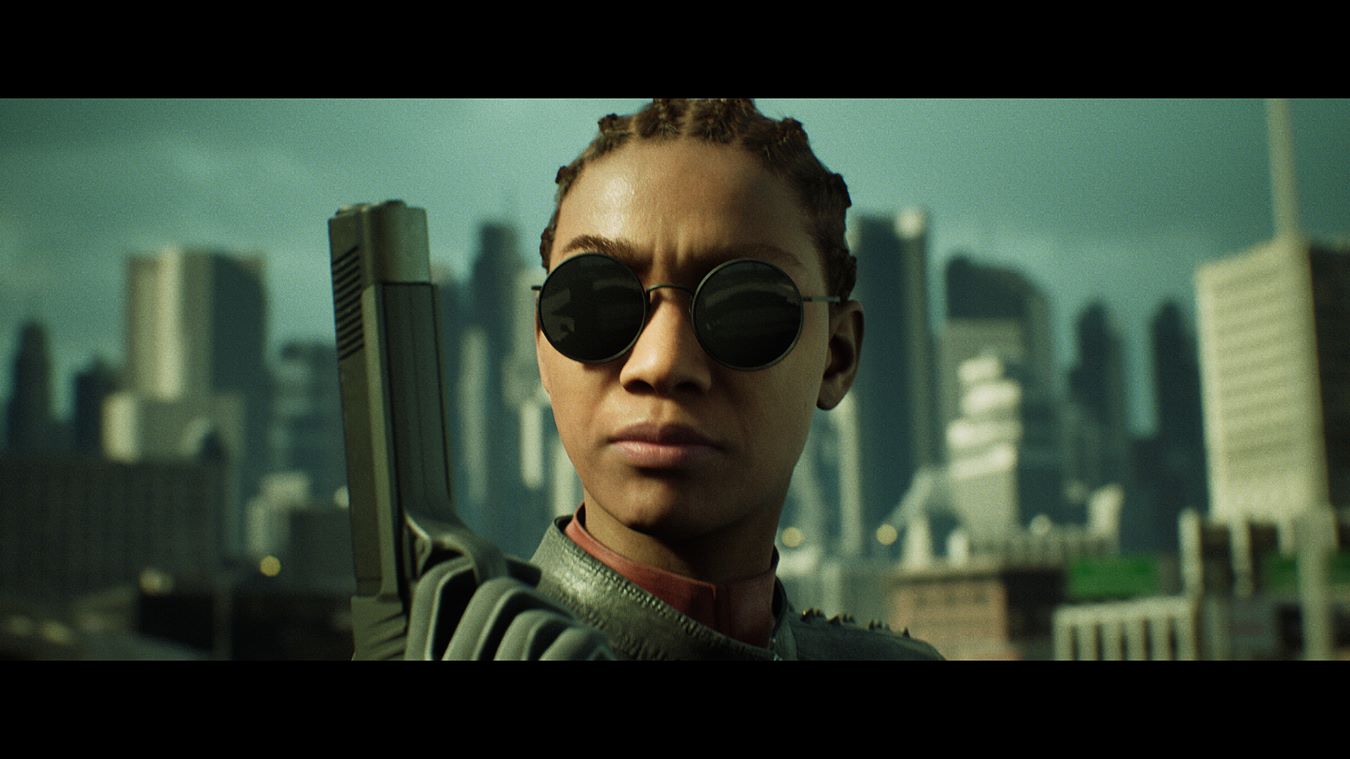 One of Epic Games' virtual actors, rendered in real time on Xbox Series X in the latest Unreal Engine 5 demo.Epic Games
One of Epic Games' virtual actors, rendered in real time on Xbox Series X in the latest Unreal Engine 5 demo.Epic Games
2021 is the 25th anniversary of a gaming-related milestone: the Super Mario 64 face. This fascinating tech demo (whose creator opines about it in a May 2021 interview) is the first thing you see upon booting the N64's signature game, and it was a declaration of the N64's potential 3D prowess, well ahead of the likes of Sony's first PlayStation.
Modern games rarely come with this sort of useless, whimsical tech demo, and similar tech muscle-flexes on consoles have been rare in the years since the N64's '90s heyday. Tonight, another unbelievable demo joins its ranks: The Matrix Awakens.
This brand-new Unreal Engine 5 showcase, now downloadable on Xbox Series X/S and PlayStation 5, is rendered almost entirely in real time on current-gen consoles. What's more, every image in this article was not only captured on my own home Series X but is also, according to Epic Games, rendered in real time. Only a few choice snippets of the demo, now downloadable via Xbox Live and PlayStation Network, consist of premade video footage, which I skipped in favor of the impressive faces, action sequences, and cityscapes that UE5 is apparently equipped to render on the latest home consoles.
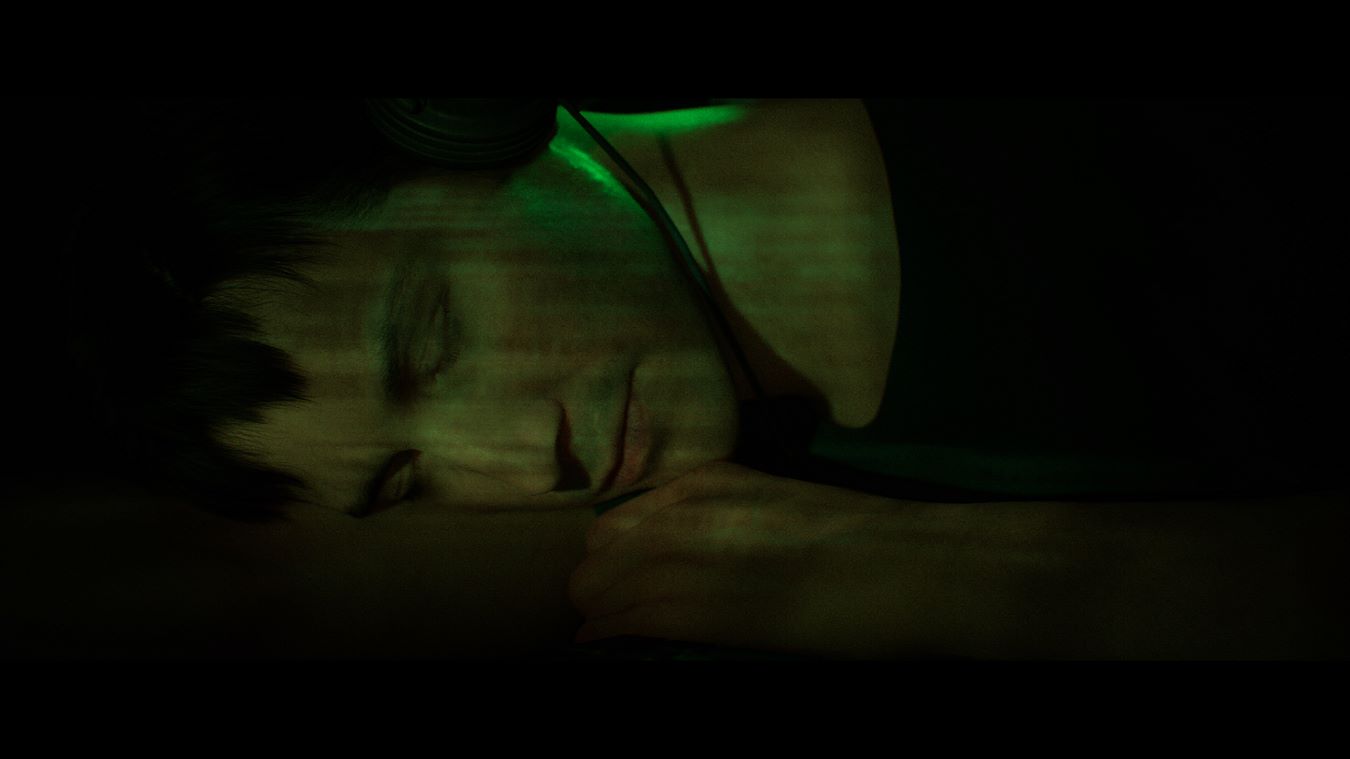 Real-time lights flicker over a sleeping, virtual Keanu Reeves in this recreation of a classic Matrix 1 scene.
Real-time lights flicker over a sleeping, virtual Keanu Reeves in this recreation of a classic Matrix 1 scene.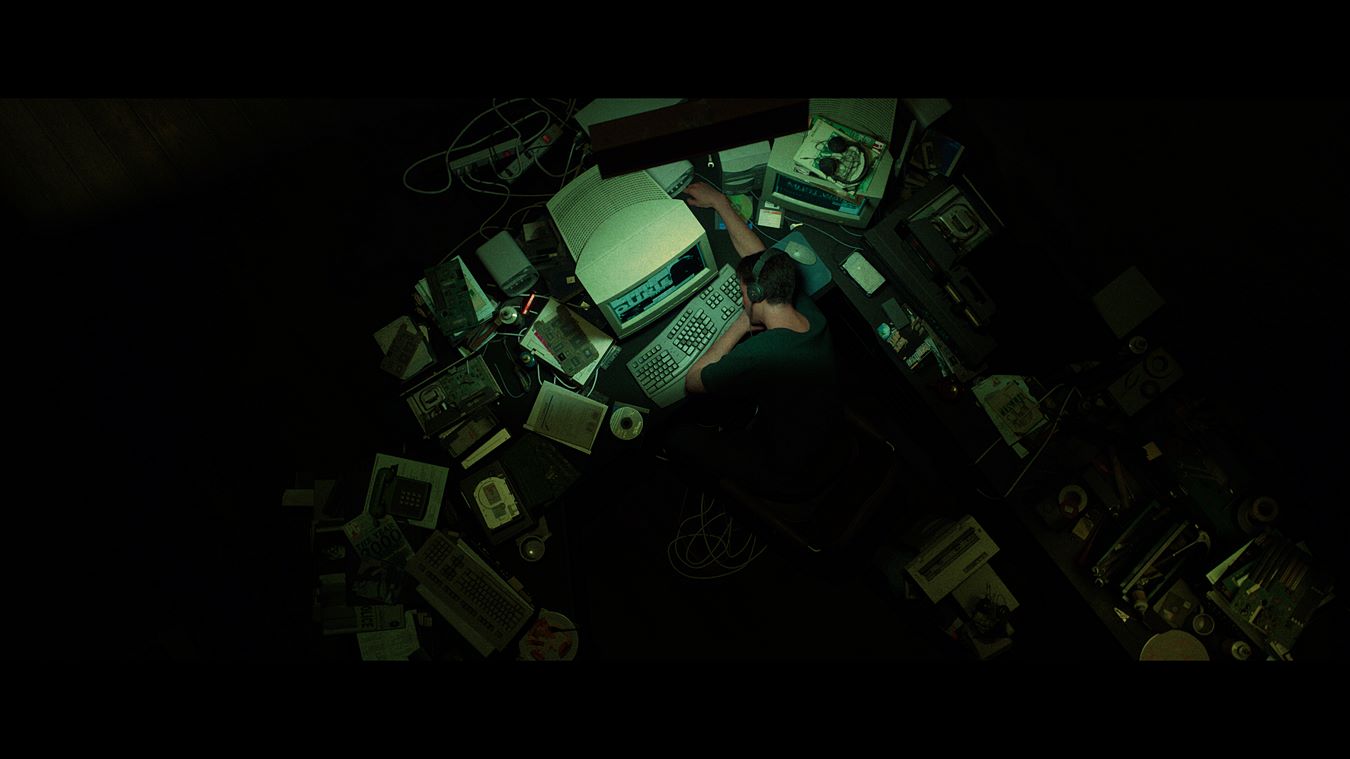 A real-time camera hovers over the same scene.Epic Games
A real-time camera hovers over the same scene.Epic Games
Based solely on the still images in this article, any passerby can find visual elements to nitpick or shrug at. Sunglasses cover eyes in some scenes. Or maybe there's too much blur. While watching the demo play out on my Series X, I hunted for traces of the uncanny valley, and finding a few wasn't hard, particularly in some slightly stilted animations.
Yet that ignores the insanity of this demo's feature-rich contents being rendered on a consumer-grade gaming console. In all my years of covering real-time graphics on PCs and consoles, I've yet to see something so impressive and realistic—all opened up to the scrutiny of my controller taps.
Two parts: Narrative at first, then guns, cars, and free flight
 Three digital actors, rendered in real time on Xbox Series X.
Three digital actors, rendered in real time on Xbox Series X.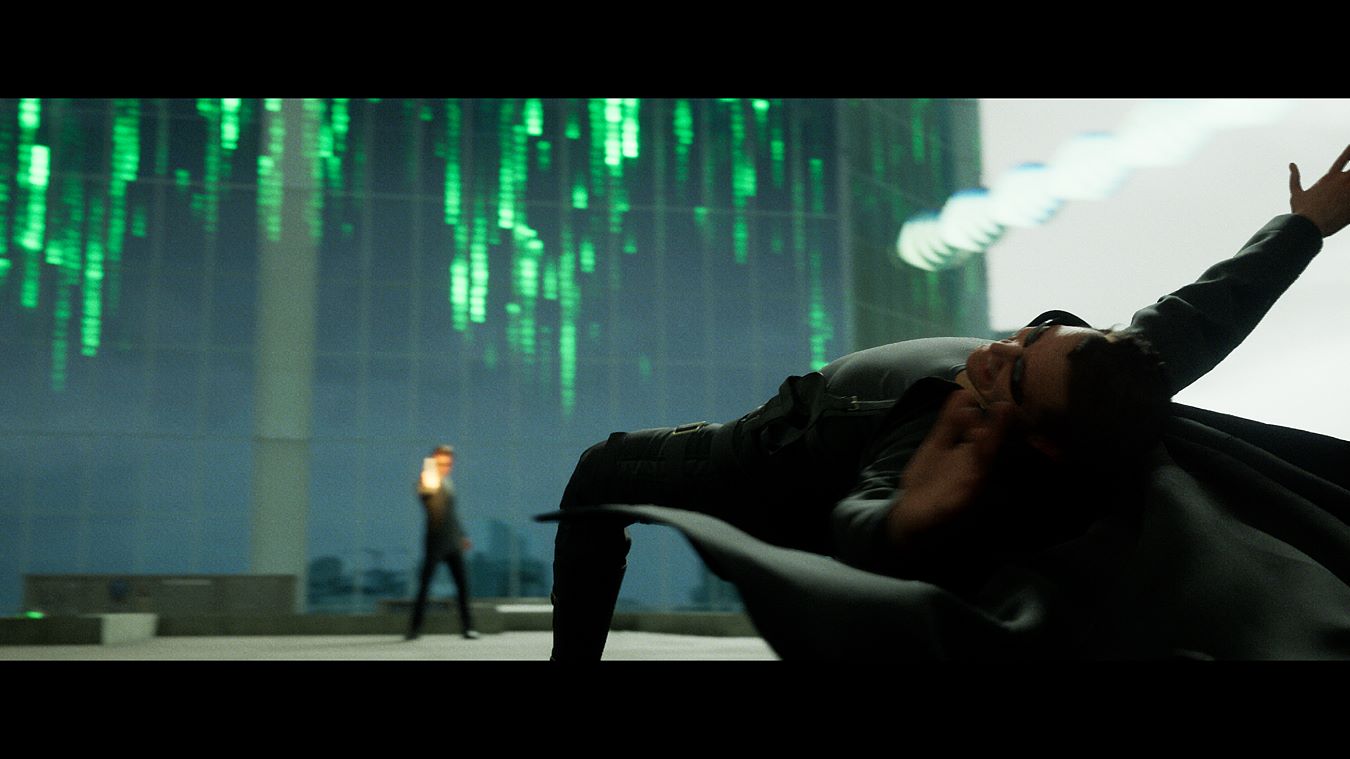 A classic Matrix 1 bullet-time scene, rendered in real time on Xbox Series X.Epic Games
A classic Matrix 1 bullet-time scene, rendered in real time on Xbox Series X.Epic Games Moss and Reeves, rendered in real time on Xbox Series X.Epic Games
Moss and Reeves, rendered in real time on Xbox Series X.Epic Games Moss, rendered in real time on Xbox Series X.Epic Games
Moss, rendered in real time on Xbox Series X.Epic Games Modern-day Reeves, rendered in real time on Xbox Series X.Epic Games
Modern-day Reeves, rendered in real time on Xbox Series X.Epic Games Matrix 1-vintage Reeves, rendered in real time on Xbox Series X.Epic Games
Matrix 1-vintage Reeves, rendered in real time on Xbox Series X.Epic Games
The demo has two parts. The first is a narrative sequence that doesn't respond to button taps, and it opens with a digital facsimile of actor Keanu Reeves—not playing a character, just Keanu being Keanu—remarking on The Matrix. He strolls through moments from the first film while pondering the original trilogy's questions about what is and isn't real. (Every time he passes a mirror, the bearded, long-haired Reeves who appears in it is video footage; otherwise, he's all digital. This article doesn't include any real-life Keanu.) Soon after, a digital facsimile of his Matrix co-star Carrie-Anne Moss appears—she only appears as a digital avatar, never as filmed footage—and their conversation eventually warps into a car chase.
At this point, the demo's second half begins, and players take control of a digital actor whom Epic Games has used in prior demos. This character can shoot both a pistol and a machine gun out the car's back seat at waves of oncoming cars, and the demo shows off a few things: massive explosions of particle effects; real-time ray tracing and global illumination; and a stunning amount of retained detail in the skyline beyond the highway.
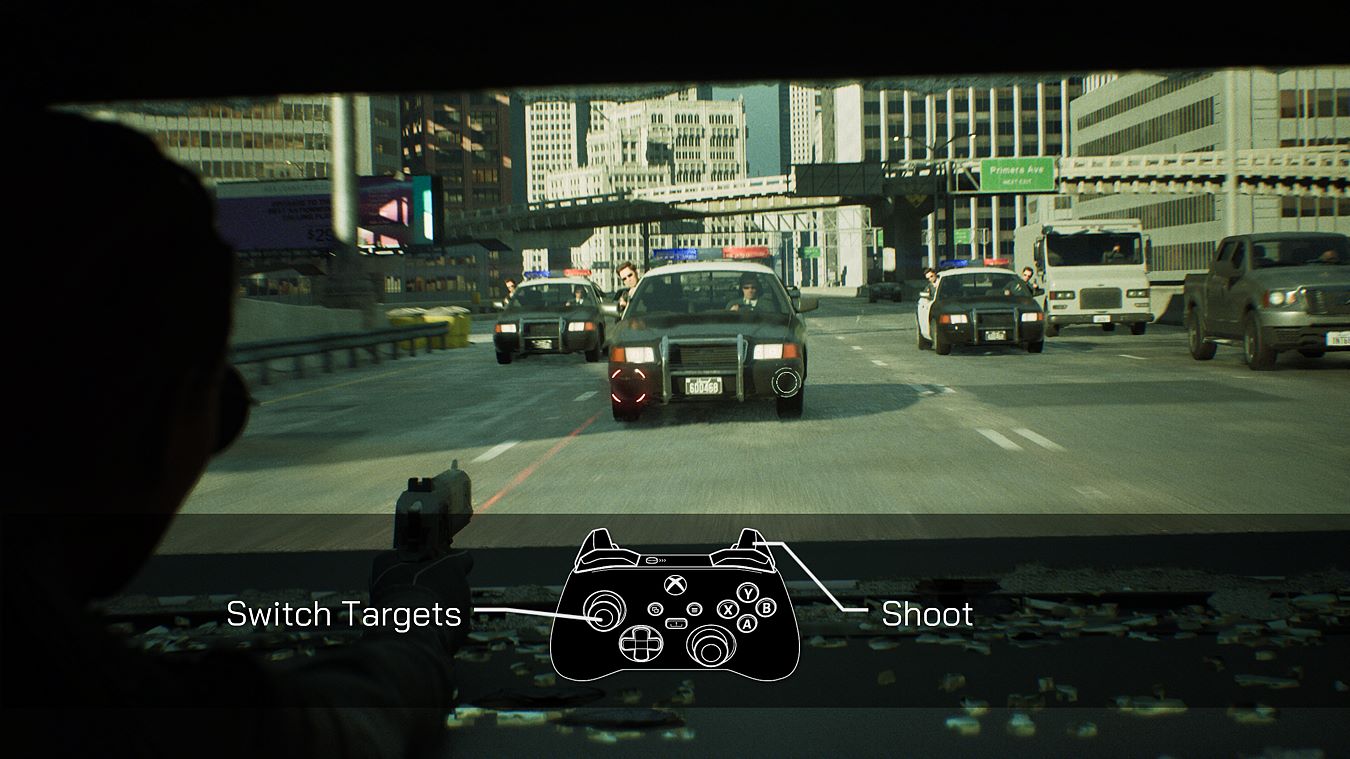 The Matrix Awakens opens with a controllable car-chase shootout.
The Matrix Awakens opens with a controllable car-chase shootout. So many fantastic particle effects, which all appear realistically on the car's trunk thanks to the demo's ray-tracing capabilities.Epic Games
So many fantastic particle effects, which all appear realistically on the car's trunk thanks to the demo's ray-tracing capabilities.Epic Games Good job, you shot down a very pretty helicopter to create an even prettier explosion.Epic Games
Good job, you shot down a very pretty helicopter to create an even prettier explosion.Epic Games The Matrix Awakens opens with a controllable car-chase shootout.Epic Games
The Matrix Awakens opens with a controllable car-chase shootout.Epic Games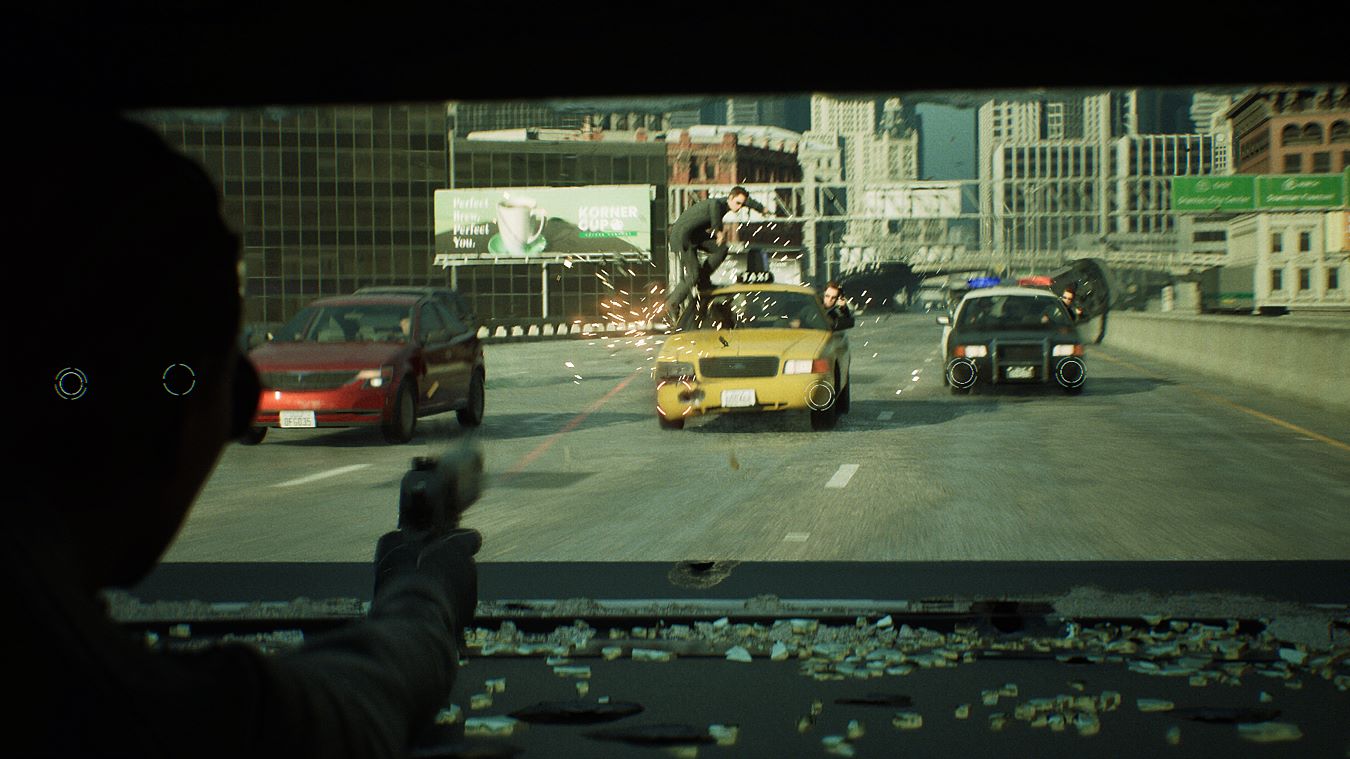 The Matrix Awakens opens with a controllable car chase shootout.Epic Games
The Matrix Awakens opens with a controllable car chase shootout.Epic Games
As seen in this hands-on demo, UE5 delivers a combination of incredible next-gen rendering techniques and, perhaps more importantly, dynamic-scaling optimizations. In particular, the sequence's very familiar faces (namely, Reeves and Moss) had me double- and triple-taking the fact that they're not real in certain moments. This is primarily thanks to UE5's new lighting pipeline, which emphasizes a combination of complex subsurface light scattering and ray-traced global illumination. In other words: the tiny light bounces that are inherent to skin, wrinkles, hair follicles, and other facial elements will look more realistic in a static-lighting void. That's nifty, but the real "Wow!" factor emerges when the lights bouncing off of other nearby materials interact naturally with the characters' faces and clothes. Put this demo's Reeves next to his Cyberpunk 2077 version to really see the UE5 difference.
Upscaling, geometrical culling, dynamic lighting adjustments
If you're wondering how UE5 can calculate so much lighting information on AMD-powered consoles, which lack Nvidia's heavyweight ray-tracing-dedicated cores, The Matrix Awakens lets players enable and disable a crucial UE5 party trick: a form of upscaling that resembles AMD's own FSR technology. UE5 operates with a base resolution well below the 4K maximum on Series X and PlayStation 5, and for the most part, it neatly upscales everything from up-close faces to distant city details—though as with many upscaling options, UE5's initial stab at the concept suffers the most with harsh, diagonal lines in the distance.
Outside of superzoomed, surprisingly realistic faces, UE5 is constantly culling and reassessing how much geometric density and texture richness should be devoted to any apparent on-screen image. This results in open-world views that never appear to delete distant objects. To prove this, the demo eventually shifts away from the car chase and into a playable, open-world experience, which players can traverse on foot, via car, or as a floating, superfast camera.
The latter is arguably the most impressive. It shows how quickly UE5 can adjust to arbitrary camera movement and render a huge amount of miles-deep city data—all while minding the location of both the Sun and any light sources built into the city's streets or interiors. And as a serious flex of the engine, Epic allows players to move the Sun around the city or disable it entirely, as they see fit.
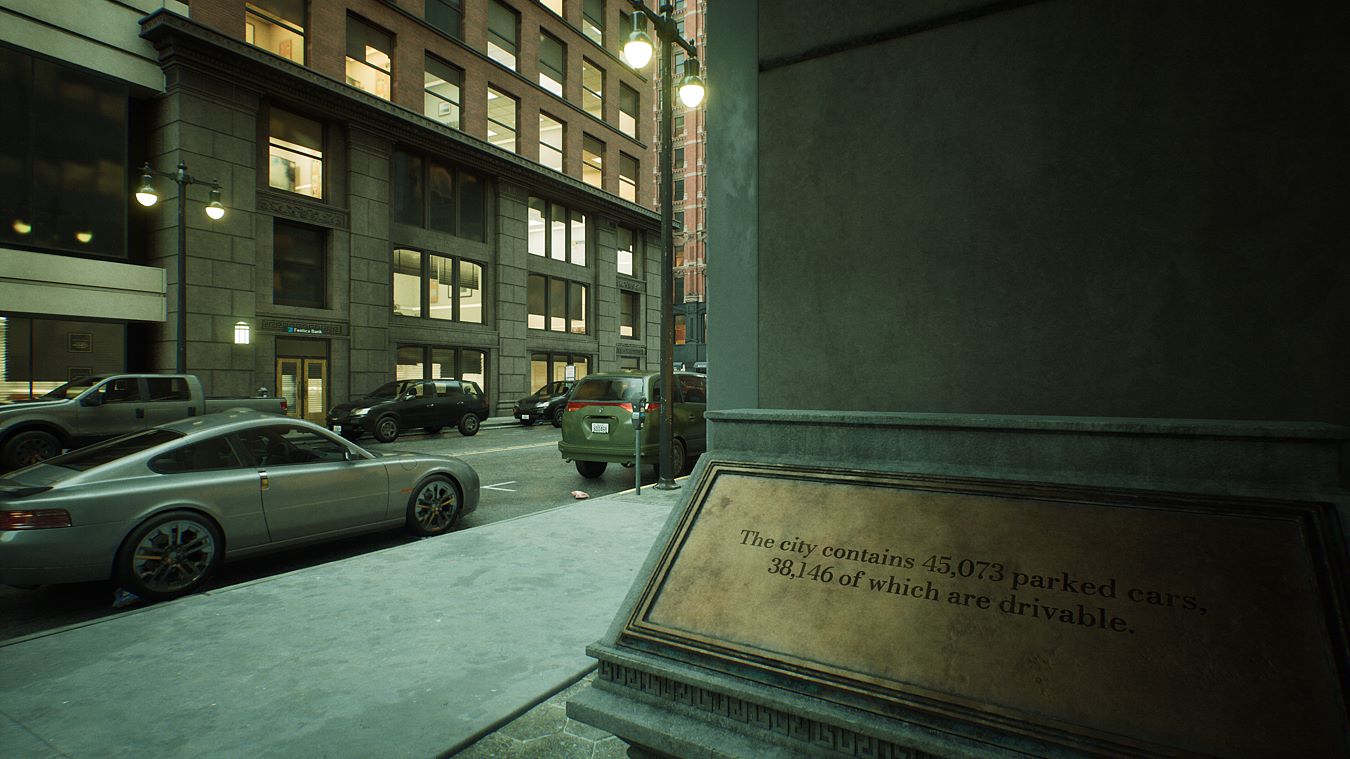 Go back and forth to see how UE5's dynamic lighting system plays out when the Sun is moved around in this week's latest UE5 demo.
Go back and forth to see how UE5's dynamic lighting system plays out when the Sun is moved around in this week's latest UE5 demo.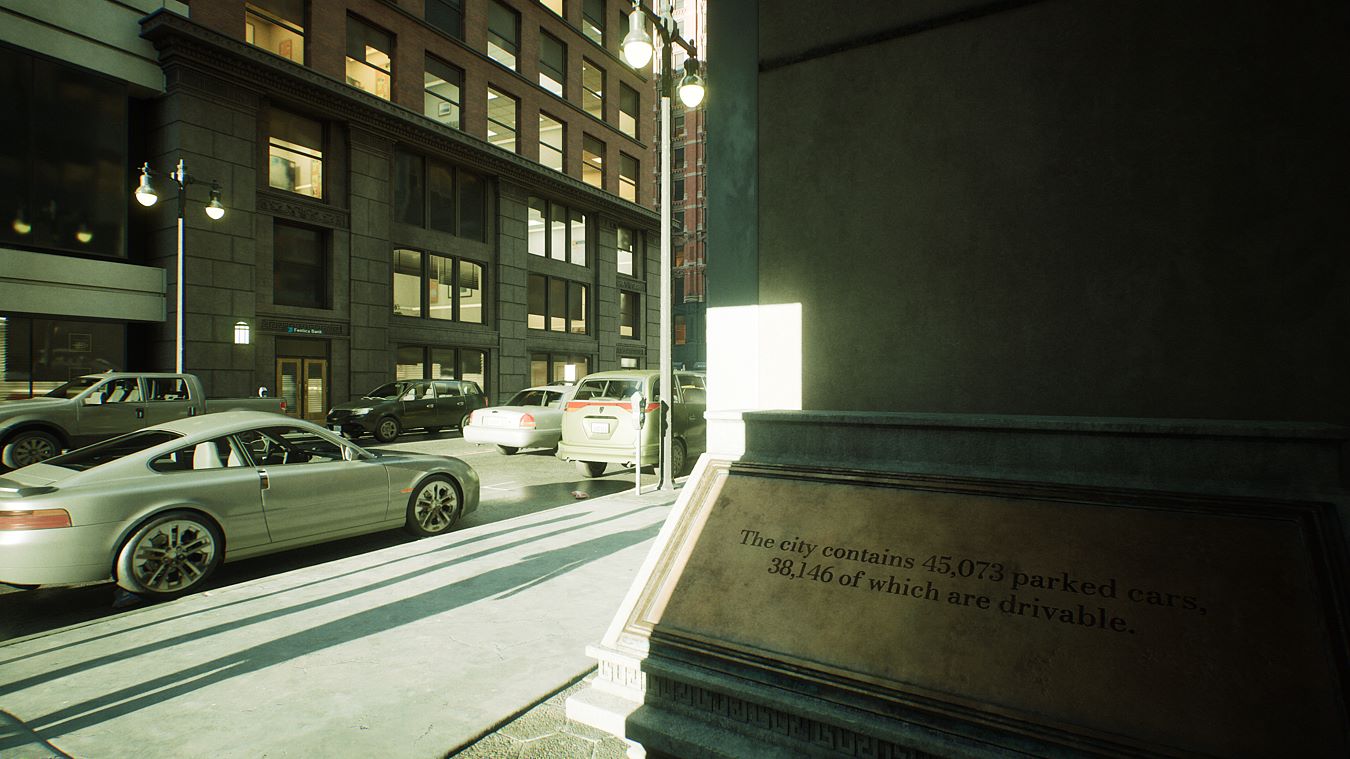 Go back and forth to see how UE5's dynamic lighting system plays out when the Sun is moved around in this week's latest UE5 demo.Epic Games
Go back and forth to see how UE5's dynamic lighting system plays out when the Sun is moved around in this week's latest UE5 demo.Epic Games Go back and forth to see how UE5's dynamic lighting system plays out when the Sun is moved around in this week's latest UE5 demo.Epic Games
Go back and forth to see how UE5's dynamic lighting system plays out when the Sun is moved around in this week's latest UE5 demo.Epic Games Go back and forth to see how UE5's dynamic lighting system plays out when the Sun is moved around in this week's latest UE5 demo.Epic Games
Go back and forth to see how UE5's dynamic lighting system plays out when the Sun is moved around in this week's latest UE5 demo.Epic Games Go back and forth to see how UE5's dynamic lighting system plays out when the Sun is moved around in this week's latest UE5 demo.Epic Games
Go back and forth to see how UE5's dynamic lighting system plays out when the Sun is moved around in this week's latest UE5 demo.Epic Games Go back and forth to see how UE5's dynamic lighting system plays out when the Sun is moved around in this week's latest UE5 demo.Epic Games
Go back and forth to see how UE5's dynamic lighting system plays out when the Sun is moved around in this week's latest UE5 demo.Epic Games Go back and forth to see how UE5's dynamic lighting system plays out when the Sun is moved around in this week's latest UE5 demo.Epic Games
Go back and forth to see how UE5's dynamic lighting system plays out when the Sun is moved around in this week's latest UE5 demo.Epic Games Go back and forth to see how UE5's dynamic lighting system plays out when the Sun is moved around in this week's latest UE5 demo.Epic Games
Go back and forth to see how UE5's dynamic lighting system plays out when the Sun is moved around in this week's latest UE5 demo.Epic Games
The above gallery shows some time-of-day shifts in various locales in the demo, and these prove what the rest of the gallery hints at: UE5's stunning ability to render shadows, light bounces, and ambient occlusion. Wherever you go, and however you place sources of light, UE5 accounts for them in real time. Anyone who's rigged lighting in a last-gen 3D game can tell you how this kind of realistic, "grounded" look typically requires the utmost care in placing and producing prebaked lighting sources and other fakery. Yet whenever a player arbitrarily adjusts lights, The Matrix Awakens just... works.
Even more impressively, the demo devotes consoles' rendering power to aspects that apply to actual games: the rendering, management, and even generation of an entire city's worth of pedestrians, cars, and buildings. Every time you frame an impressive vista within The Matrix Awakens, look at the volumetric clouds and the fields of pedestrians and cars down below—all with realistic shadows and ambient occlusion, to boot. (Comparatively, modern 3D beasts like Microsoft Flight Simulator still struggle with seemingly floaty cars on their procedurally generated roads and highways.)
Game industry: It’s time to cast off last-gen console shackles
 The Matrix Awakens' city never culls its most distant objects, no matter how its camera is aimed.
The Matrix Awakens' city never culls its most distant objects, no matter how its camera is aimed.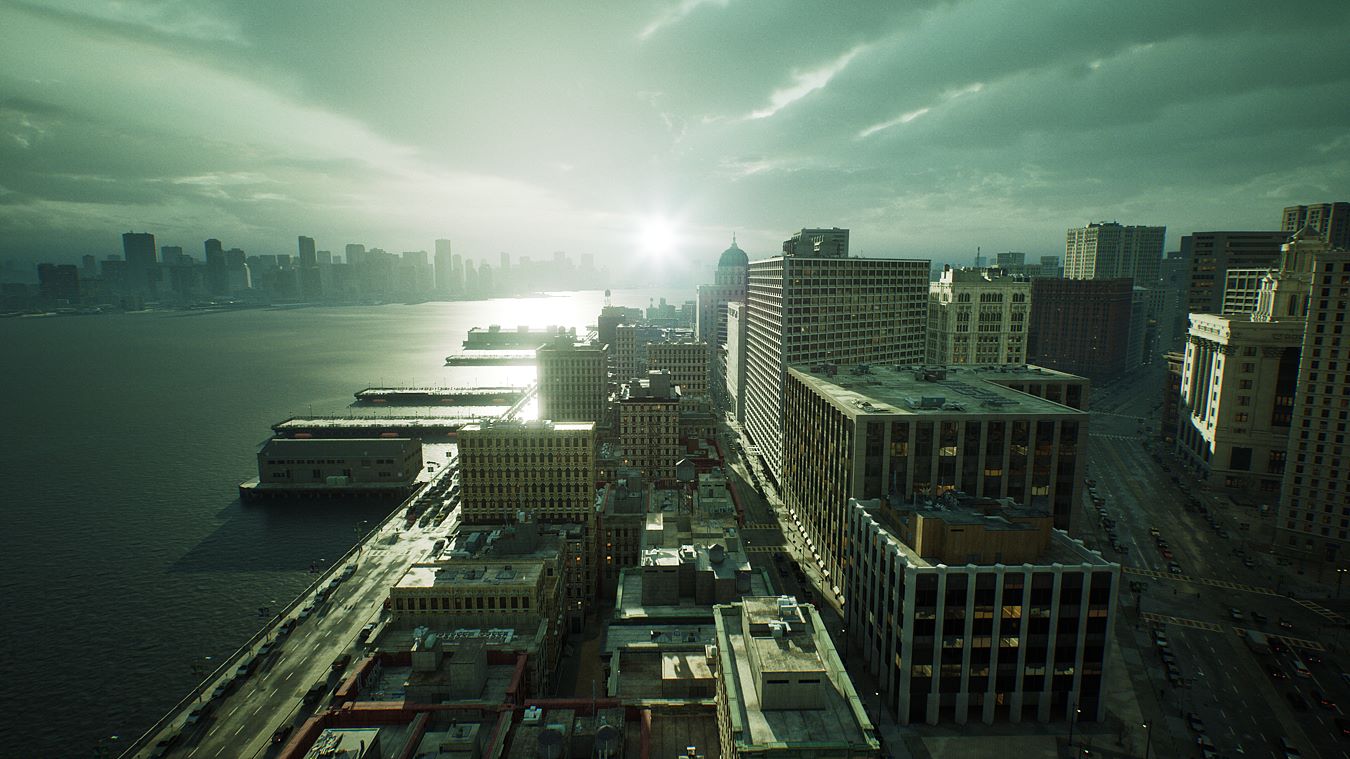 Gorgeous vistas appear by simply turning the camera and letting the default lighting system do its work.Epic Games
Gorgeous vistas appear by simply turning the camera and letting the default lighting system do its work.Epic Games
Most of the city assets were procedurally generated by the Houdini toolset, which makes sense, considering Epic became a minority owner of that tool's developers in 2020. The Matrix Awakens is a showcase of what a toolset like Houdini can do for game makers: they can get started generating a massive network of buildings and objects, then have artists work backwards to customize them for their game's artistic vision. Of course, that same art team benefits from UE5's apparent automatic lighting, shadow, and material-based light-bounce systems.
As impressed as I am by this demo, I don't necessarily mean to shill for Epic, especially since this demo sometimes struggles to maintain a steady 30 frames per second. Epic representatives did not answer my questions on whether to expect a patch to resolve its biggest frame-rate chugs during scenes with explosions. (Of course, for context, we previously drooled over a more expensive and less impressive real-time ray-tracing demo as recently as 2018.) And some of the demo's facial animation quirks have me wondering whether a more experienced team of facial animators, perhaps at triple-A studios like Naughty Dog or Rockstar North, will someday eclipse this demo's occasional Reeves wrinkles.But after picking my jaw up from the floor, I'm mostly left hoping that this demo disabuses major game studios of the notion that current-gen games should be shackled to last-gen sales targets. It's certainly a jarring demo to take in after furrowing my brow at Halo Infinite's open-world debut earlier this week. Whether devs adopt UE5 or use their own engines and systems, the time has come for them to draw lines in the sand—and I hope those lines benefit from precise particle rendering, ray-traced global illumination, and all the other cool stuff that's currently being underused on current-gen consoles.
Listing image by Epic Games / WB Studios
"current" - Google News
December 10, 2021 at 11:02AM
https://ift.tt/3pMyNCX
The Matrix Awakens is 2021's must-play flex of current-gen console power - Ars Technica
"current" - Google News
https://ift.tt/3b2HZto
https://ift.tt/3c3RoCk
Bagikan Berita Ini















0 Response to "The Matrix Awakens is 2021's must-play flex of current-gen console power - Ars Technica"
Post a Comment